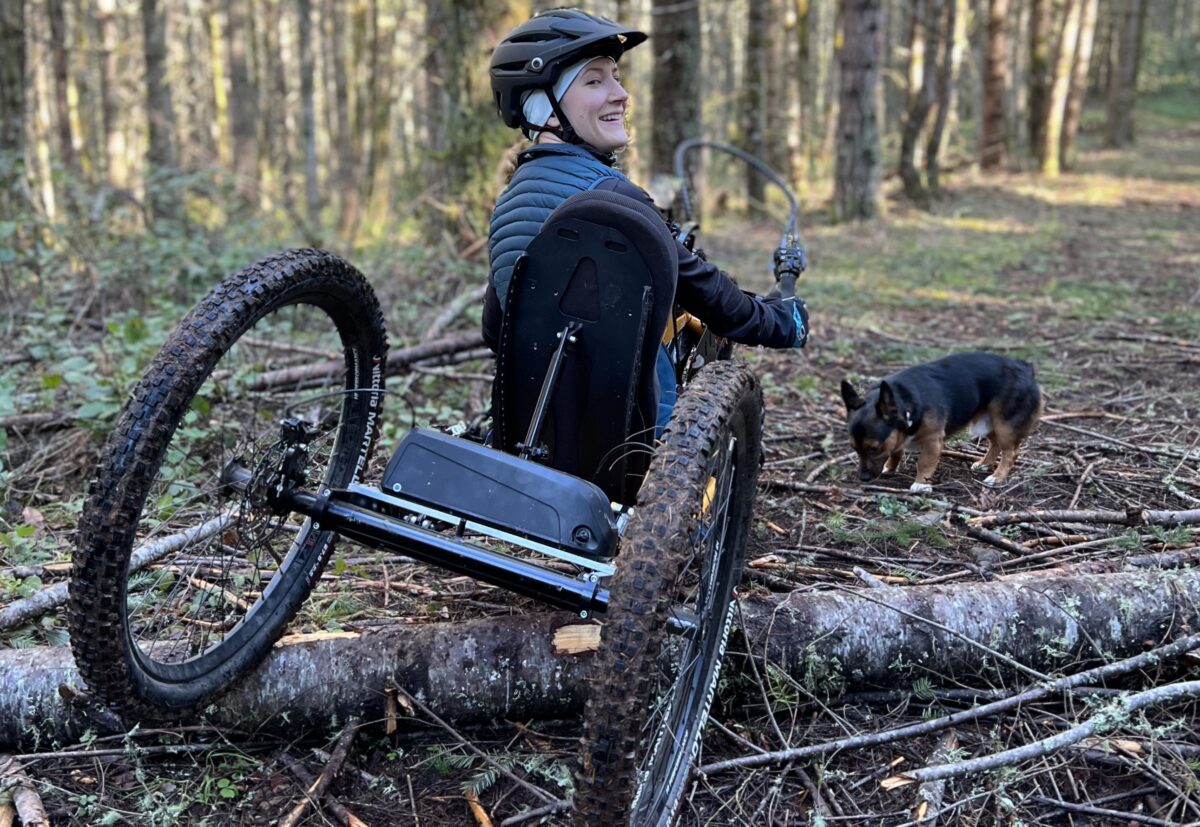
Lizzy Ragan has always loved cycling and getting outside. When she became paralyzed from the sternum down after a rock climbing accident in 2019, she didn’t see why that had to change.
“You might not see people in wheelchairs out and about, because it’s hard. That doesn’t mean they don’t exist.”
— Lizzy Ragan
“One of the first things I was saying [after the accident] was ‘Well, at least cycling’s adaptive.’ It was kind of like a North Star,” Ragan says. “It was something that was a big motivator for me, and it helped model that there can still be quality of life after a traumatic life-changing accident.”
Ragan is originally from Oregon, but lived in Boston at the time of her accident, which happened in New Hampshire. She was treated in a rehabilitation center there, where she was immediately encouraged to try out adaptive sports. In September 2020, just over a year after her injury, she moved back to Oregon, and now lives in Mulino, a small town near Canby just southwest of Portland.
Ragan says she didn’t set out to be a disability or adaptive sports activist when she started riding. But, as someone who works in public health and has spent her career advocating for people who can’t advocate for themselves, she knows the importance of visibility. Just by getting out onto mountain biking trails and being visible, sharing photos of her experiences on Instagram, she’s able to show people what’s possible – that you can still be active and adventurous even after your life changes so dramatically.
“Every time I get my mountain bike out on trails, I get so much attention. I’ve never gone out to a mountain biking trail system and not had someone be like, ‘Tell me where you got that bike! I know someone who could really benefit from that!'” she says.
Advertisement
But Ragan points out that if trails aren’t accessible, you’re not going to see people hand cycling – just like you won’t see people with disabilities in other spaces they can’t access. This becomes a catch-22: if you don’t see people doing adaptive sports, you may not realize these people are out there. But if you don’t know there are people who want to partake in these activities, you won’t be as inclined to make these spaces accessible, and the cycle will continue. That’s why Ragan sees it as so important just to show the public that adventuring after injury is possible, and encourage other people with disabilities to see what the world of adaptive sports has to offer.
“I feel really privileged to be able to self-advocate, and by doing so, I’m advocating for other people like me,” Ragan says. “I don’t have a large-scale, organized agenda about what accessible cycling advocacy looks like. It’s more like, there are other people like me who want to do sports like I want to do them.”
Some of the ways to make things like biking trails more accessible are small changes that would be pretty simple to accomplish, but would go a long way as far as providing people with disabilities with opportunities to experience the outdoors like able-bodied people can.
“Oftentimes, it’s just that we need the gate to be four inches higher in order to get under it, or we just need someone to remove a boulder from a trail. We can ride this five mile long trail, but there’s one pinch point which we can’t get through because those basic specs haven’t been considered,” Ragan says. “I think there’s kind of this all or nothing mentality. But we can do a lot for accessibility with just a few small changes at a very low cost.”
While cycling on the Springwater Corridor, for instance, Ragan says a problem she faces is just being able to reach the crosswalk button from her bike. If she’s cycling alone, she’ll have to wait a few minutes for an able-bodied person to press it for her. There’s also the broken elevators at pedestrian and bike crossings like the Bob Stacey Crossing, which make it so people who can’t get up the stairs have to find another way to get around dangerous intersections. For able-bodied people, a broken elevator might be a hassle. But for people with disabilities, it’s prohibiting.
Advertisement
Ragan says mountain hand cycling is one of the best ways for people who use wheelchairs to experience nature – the equivalent to hiking. Without the tools to access trails, you lose something that is so helpful to one’s mental well-being, especially following something as traumatic as a rock climbing accident.
Ragan thinks people’s prejudices can lead them to thinking people with disabilities are all either born with them or brought it upon themselves in some way. In reality, someone can go from being fully able-bodied to paraplegic in an instant – a fact that can be a hard pill to swallow, and that people want to avoid thinking about.
“I’ve heard it said that everyone is pre-disabled. I didn’t expect to get paralyzed. I was doing easy climbing, it was supposed to just be a pretty casual, relaxed day,” she says.
Ragan is involved in other adaptive sports, like skiing, too, and she says she is always looking for something new to try. She’s also an artist, creating watercolor paintings based on her experiences with nature.
To the bike advocacy community at large, Ragan says it’s important to think about the people you don’t see every day because they’re limited by barriers others don’t think of as a big deal.
“We don’t think about inclusion when it’s not something that we see every day. We perceive [people who want to participate in adaptive sports] as a small portion of the population, rather than a large portion of the population that we would see more if the space was more accessible, and our world was more accessible,” she says. “You might not see people in wheelchairs out and about, because it’s hard. That doesn’t mean they don’t exist.”



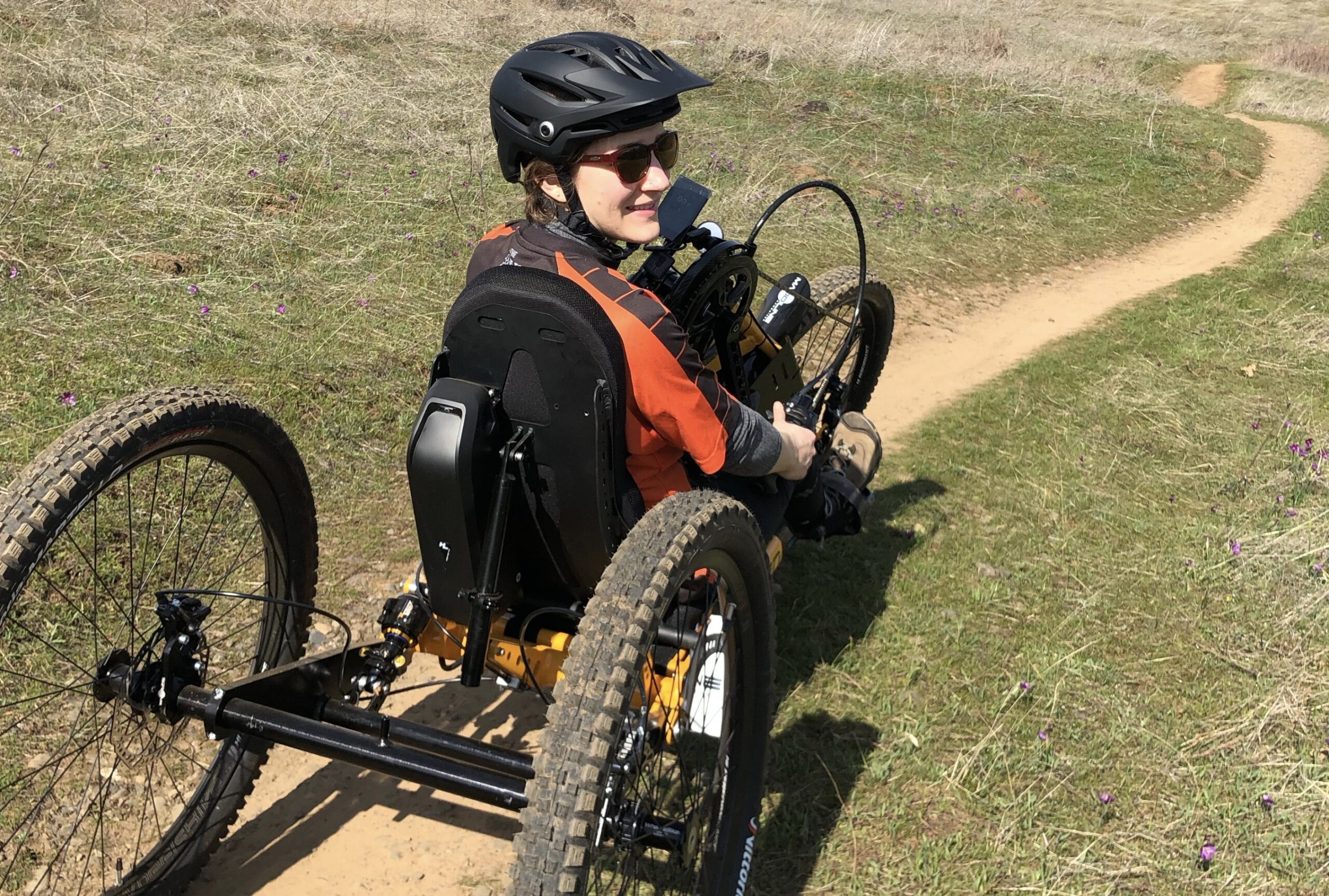
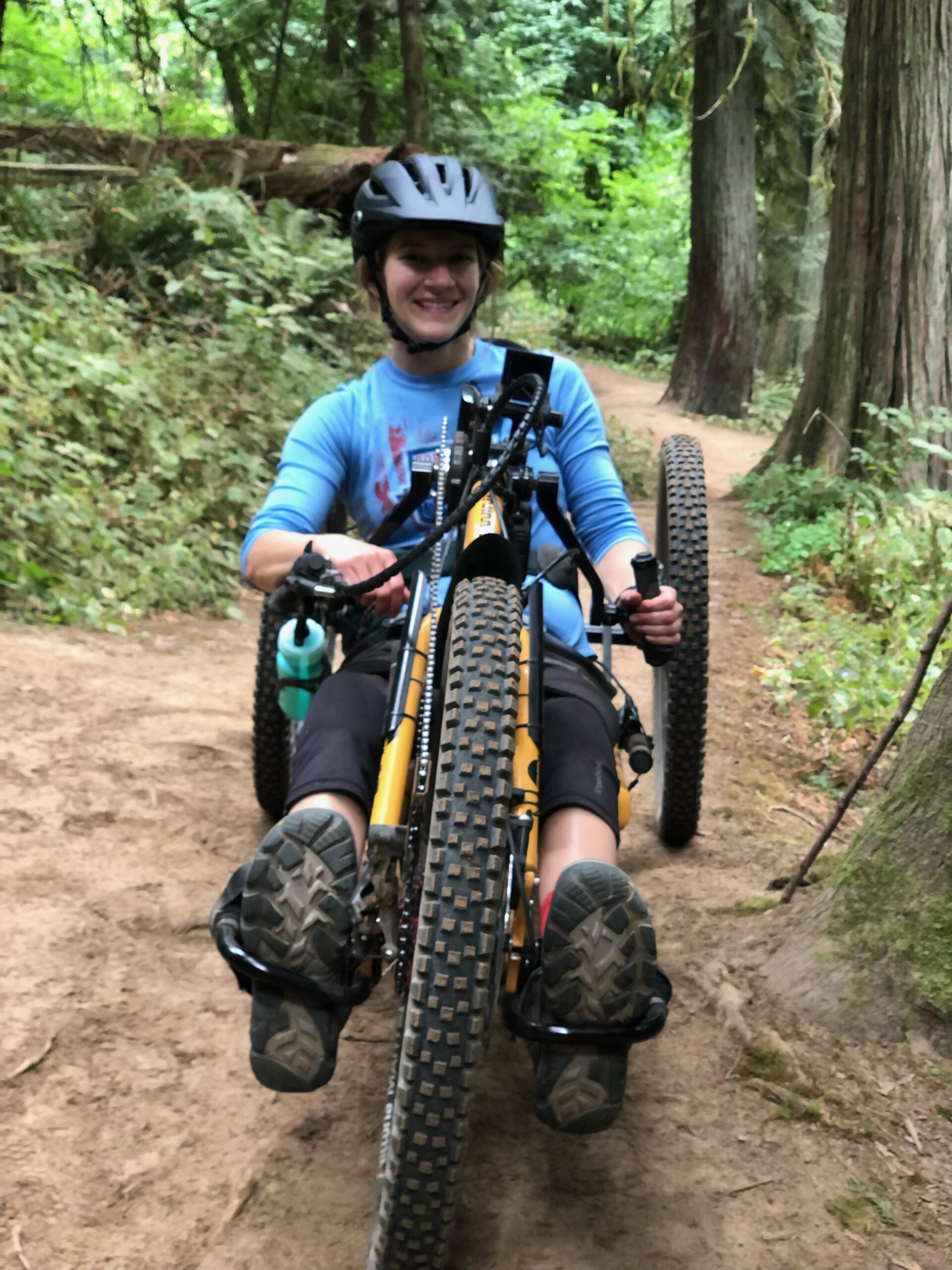
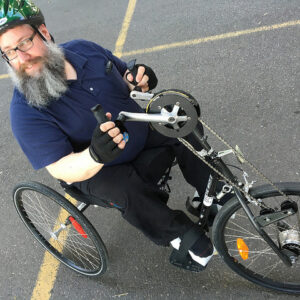


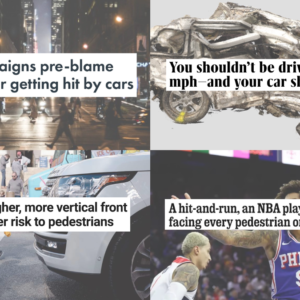
Thanks for reading.
BikePortland has served this community with independent community journalism since 2005. We rely on subscriptions from readers like you to survive. Your financial support is vital in keeping this valuable resource alive and well.
Please subscribe today to strengthen and expand our work.
Really interesting article and perspective. I agree wholeheartedly with Lizzy, and hope PBOT + Portland Parks are paying attention to her experience. This quote particularly resonates: “I think there’s kind of this all or nothing mentality. But we can do a lot for accessibility with just a few small changes at a very low cost.”
This is beautiful and inspiring story. This serves an excellent reminder of how critical universal design principals are. I would add the Waud Bluff bridge to the obvious fails on the part of the City to serve people.
Great profile, and thank you to Lizzy for her advocacy! Bike fun is for everyone and we need to keep pushing to make these improvements.
Excellent article!
“…if you don’t see people doing adaptive sports, you may not realize these people are out there.”
and
“Oftentimes, it’s just that we need the gate to be four inches higher in order to get under it, or we just need someone to remove a boulder from a trail. We can ride this five mile long trail, but there’s one pinch point which we can’t get through because those basic specs haven’t been considered…”
Makes me think about comments I’ve seen online, like “There used to be a log down across my favorite trail, but someone cut it out! And there used to be a lot of rocks, too. Stop sanitizing the trails!”
I don’t know how the MTB trail maintenance community resolves this dilemma, but it does seem like an issue.
Yeah, complaints about “dumbing down” trails abound on MTB forums. It’s a tough problem. The best solution might be to leave the boulder/log/what-have-you in place, so the people who enjoy the challenge can still ride it, but also to build a bypass or “go-around” to enable others to also use the trail. But there’s not always enough space to widen the trail options like that.
I love everything about this story, thank you! I want to also mention that author Taylor Griggs is doing a bang up job!
Thank you for writing this, Taylor.
Thank you for your advocacy, Lizzy.